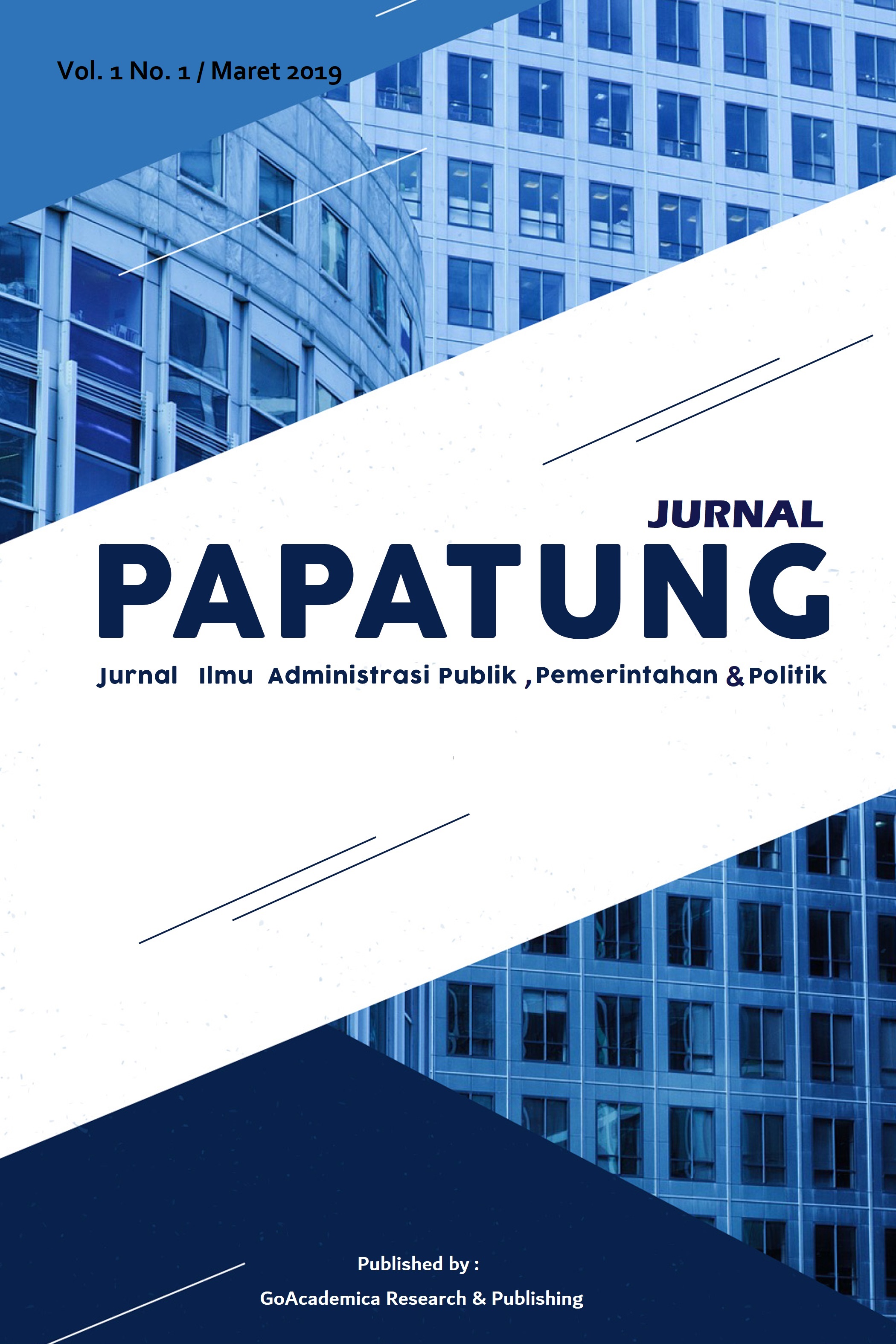DAMPAK PENILAIAN KINERJA APARATUR SIPIL NEGARA DALAM UPAYA PENINGKATAN KAPASITAS SUMBER DAYA MANUSIA UNTUK PEMBANGUNAN BERKELANJUTAN
Abstract
In this study, one important thing will be discussed, namely about what is performance, its services, especially for the state civil apparatus (ASN). Since personnel are so important from both the employee and organizational point of view, an efficient evaluation orders related evaluations to the organization. The main objective of this research is to assess the importance of evaluating the performance of the civil service to increase public efficiency as a special type of human capital. This concludes with the steps necessary to ensure the efficient use of the capacity of the civil service of the state. This study uses a qualitative approach with a literature review method to explain the performance of the State Civil Apparatus as a development of the quality of human resources.
References
Alam, G. M. (2009). The role of science and technology education at network age population for sustainable development of Bangladesh through human resource advancement. Scientific Research and Essays, 4(11), 1260-1270.
Alam, G. M. (2009). The Role of Science and Technology Education at Network Age Population for Sustainable Development of Bangladesh Through Human Resource Advancement. Scientific Research and Essays, 4(11), 1260-1270.
Arshad, M. A., Masood, M. T., & Amin, G. (2013). Effects of Performance Appraisal Politics on Job Satisfaction, Turnover Intention and Loyalty to Supervisor: Study With Reference to the Telecom Organizations of Pakistan. International Review of Management and Business Research, 2(3), 653.
Bilgin, K. U. (2007). Performance Management for Public Personnel: Multi-Analysis Approach Toward Personnel. Public Personnel Management, 36(2), 93-113.
Brown, T. (2007). Coercion Versus Choice: Citizen Evaluations of Public Service Quality Across Methods of Consumption. Public Administration Review, 67(3), 559-572.
Budihardjo, I. M. (2015). Panduan Praktis Penilaian Kinerja Karyawan. Raih Asa Sukses.
Cuming, M. (1975). The theory and practice of personnel management. Industrial and Commercial Training.
Fahrudin, A. (2011). Pemberdayaan, Partisipasi dan Penguatan Kapasitas Masyarakat. Bandung: Humaniora.
Hendrayady, A. (2011). Reformasi Administrasi Publik. Jurnal Fisip UMRAH, 1(1), 107-113.
Idris, H. A. (2016). Pengantar Ekonomi Sumber Daya Manusia. Deepublish.
Insani, I. (2009). Pengembangan Kapasitas Sumber Daya Manusia Pemerintah Daerah dalam Rangka Peningkatan Transparansi dan Akuntabilitas Pengelolaan Keuangan Daerah. Jurnal Borneo Administrator, 5(3).
Kurniawan, T. (2007). Pergeseran Paradigma Administrasi Publik: Dari Perilaku Model Klasik dan NPM ke Good Governance. Jurnal Ilmu Administrasi Negara, 7(1), 16-17.
Moleong, L. J. (2008). Metodologi Penelitian Kualitatif eds. Revisi. Bandung: Remaja Rosdakarya Offset.
Mustafid, H. (2017). Peningkatan Kinerja Aparatur Sipil Negara melalui Budaya Organisasi. Tarbawi: Jurnal Keilmuan Manajemen Pendidikan, 3(01), 1-14.
Nasucha, C. (2004). Reformasi Administrasi Publik: Teori dan Praktik. Gramedia Widiasarana Indonesia (Grasindo).
Peretz, H., & Fried, Y. (2012). National Cultures, Performance Appraisal Practices, and Organizational Absenteeism and Turnover: A Study Across 21 Countries. Journal of Applied Psychology, 97(2), 448.
Priansa, D. J. (2017). Manajemen Kinerja Kepegawaian dalam Pengelolaan SDM Perusahaan. Pustaka Setia
Roberts, G. E. (2003). Employee Performance Appraisal System Participation: A Technique That Works. Public personnel management, 32(1), 89-98.
Šalková, A. (2013). Theoretical Approaches to Employee Appraisal Methods. Scientific papers of the University of Pardubice. Series D, Faculty of Economics and Administration. 28 (3/2013).
Thoha, M. (2017). Ilmu administrasi Publik Kontemporer. Jakarta: Kencana.
Tjiptoherijanto, P. (1999). Keseimbangan Penduduk, Manajemen Sumber Daya Manusia, dan Pembangunan Daerah. Pustaka Sinar Harapan.
Wijono, S. (2010). Psikologi Industri & Organisasi. Jakarta: Kencana.








.png)
.png)

1.png)
